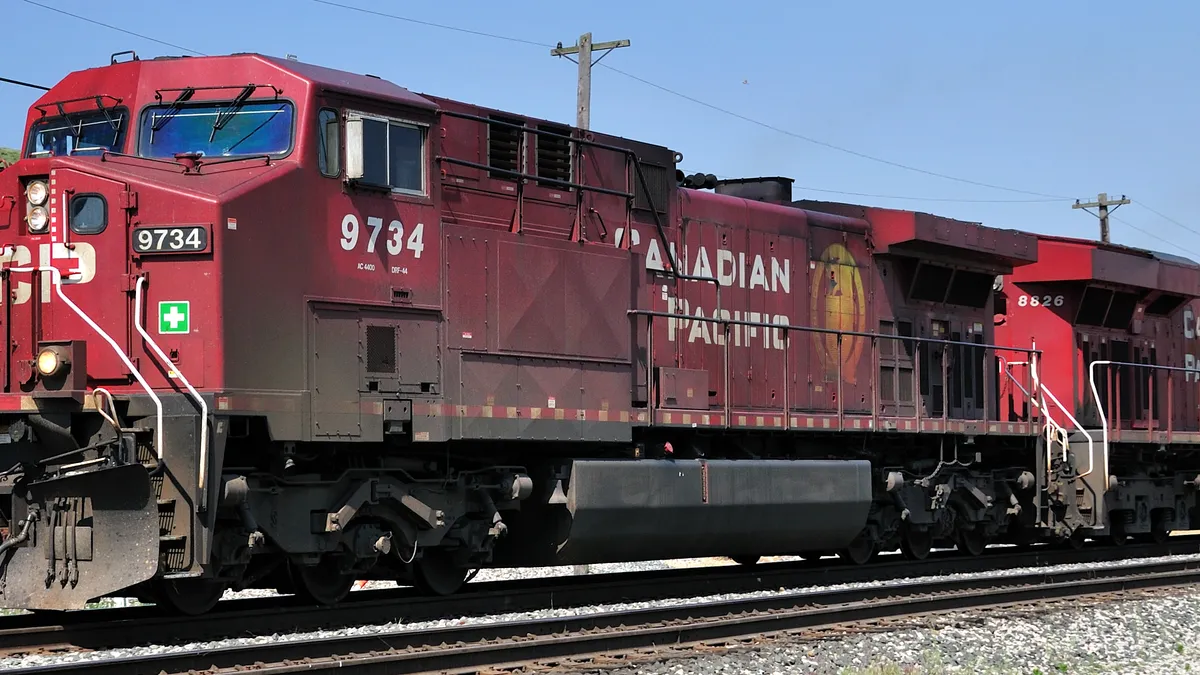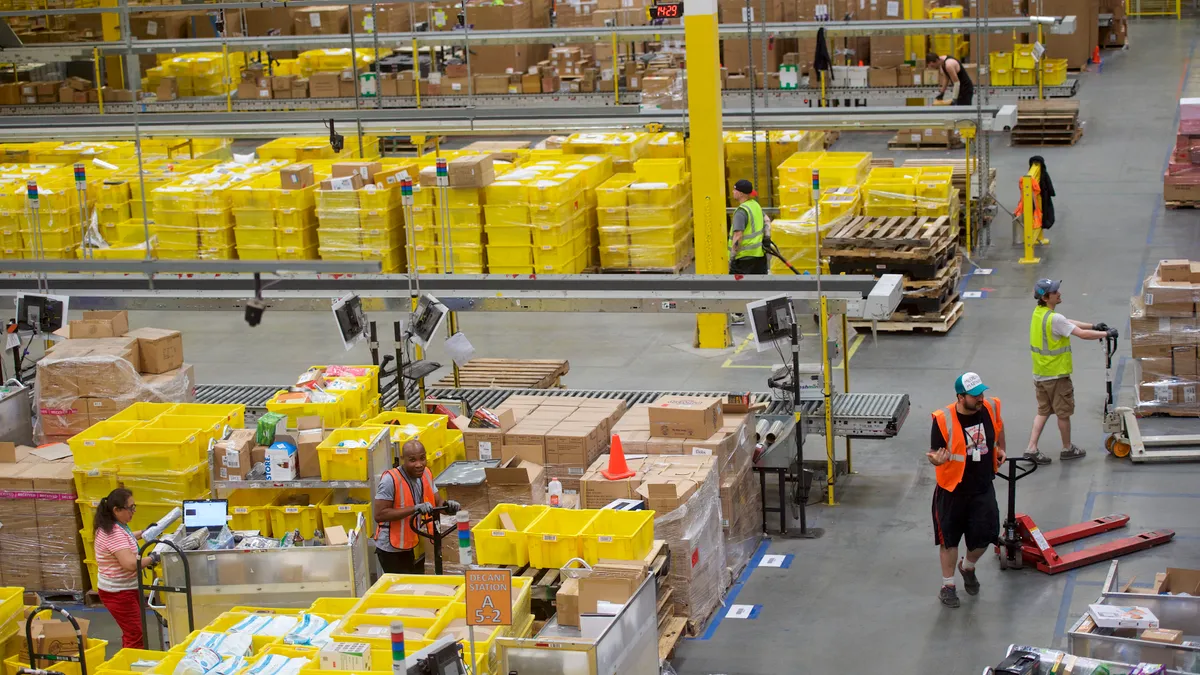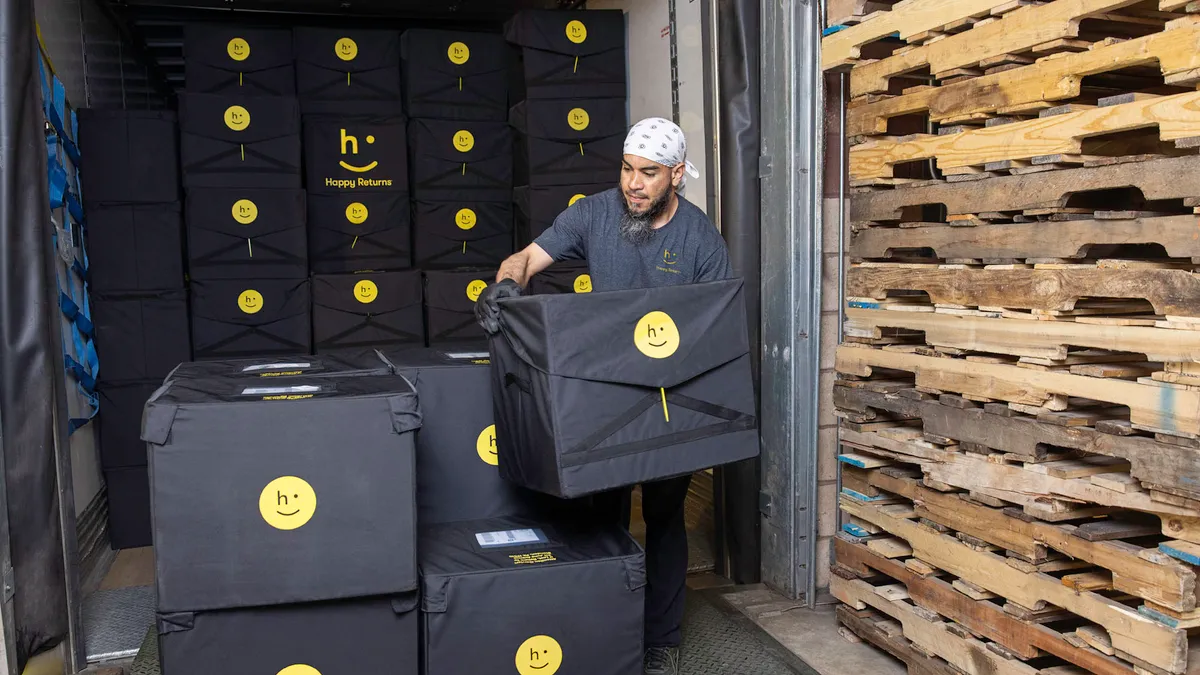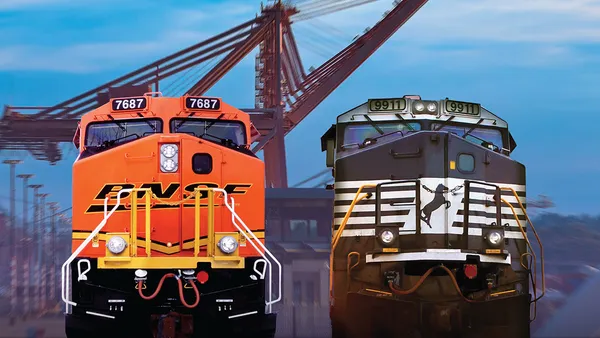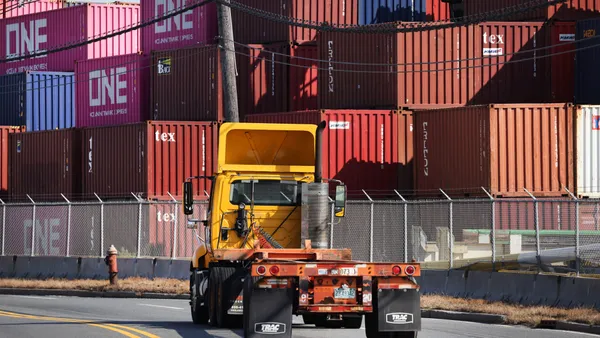Dive Brief:
- Canadian Pacific executives said the effects of the U.S.-China trade war are marginal on its rail volumes, but the railway may have seen some pull-forward of shipments ahead of the 25% import tariff beginning in January 2019 — up from 10% imposed in September.
- Just 5% of the railway's volume is dependent on China, CEO Keith Creel said in an earnings call, and much of it originates and ends in Canada, so the overall business impact of tariffs between the U.S. and China is low, said Chief Marketing Officer John Brooks.
- "We probably have started to see a little bit of pull-forward on some of the volumes in our international business," Brooks said. "Now is that robust demand, prolonged peak, or is that truly pull-forward ahead of the 25% tariff? It's a little hard to tell. It's starting to maybe feel more like the latter."
Dive Insight:
Carriers are at the front lines of the trade war, and fluctuations in their volumes help point to where and how supply chains plan to adjust their networks to mitigate rising costs.
"As we really look at our business, 3% to 4% maybe is kind of directly impacted and if I were to call it out specifically, you are right, it's some of those Vancouver imports into the United States," Brooks told Barclays Analyst Brandon Oglenski. "It's our U.S. grain business. It's our soybeans out of the Midwest exporting to China."
The suggestion shippers may have pulled forward orders to beat the tariff rush is similar to conclusions drawn by U.S. groups earlier in the year.
Over the summer, some observers believed supply chains saw an early peak in demand as shippers rushed orders to beat the first general round of tariffs that entered into effect in August. Port volumes spiked in June and August. News of Peak Pegasus, a charter ship racing from the U.S. to China, circulated the world.
By October, however, it was clear the "early peak" was not a peak at all, but rather an anomaly.
A forecast by the National Retail Federation (NRF) and Hackett Associates shows container imports are expected to stay at "near record levels" through 2019, despite tariffs. Retailers "are not able to quickly or easily change their sourcing," Jonathan Gold, NRF vice president for supply chain and customs policy, explained. Nor can all shippers afford to store excess inventory long before it is needed.
Canada, a key gateway for U.S. trade, appears to have faced a similar situation in the third quarter. Rail carriers in that country may have seen a temporary rise in demand in the third-quarter, due to the tariffs. But, as CP executives made clear, the effect is unclear.
In the short-term, it's business as usual for transportation providers.



